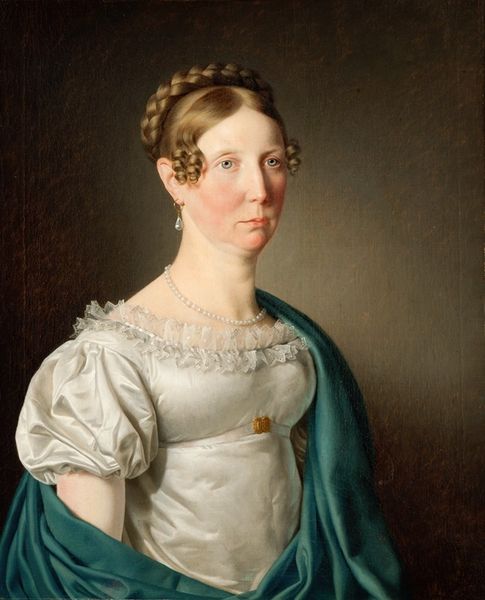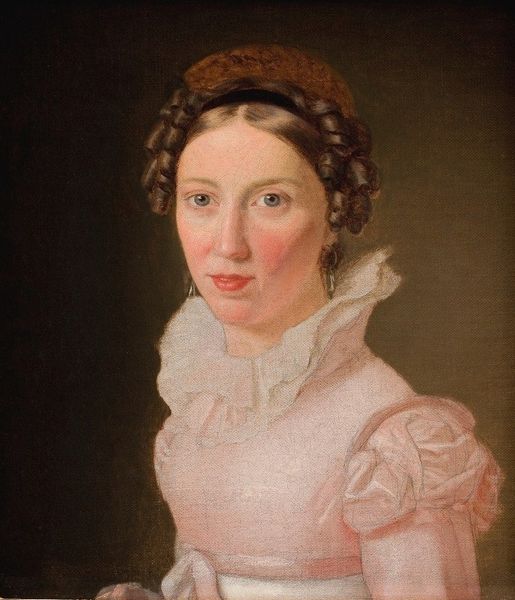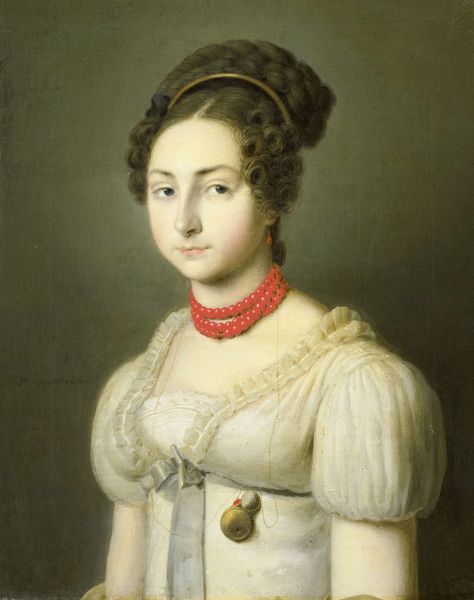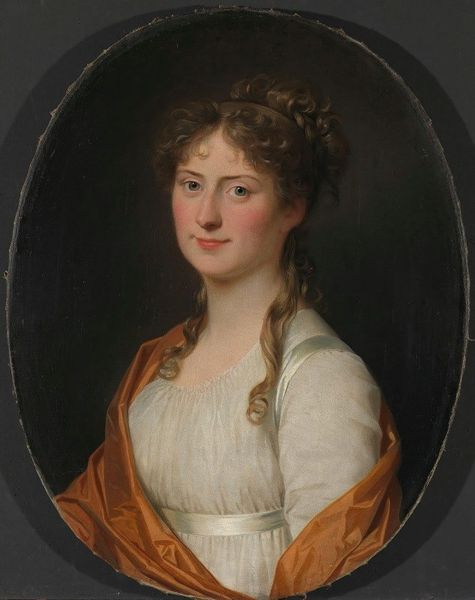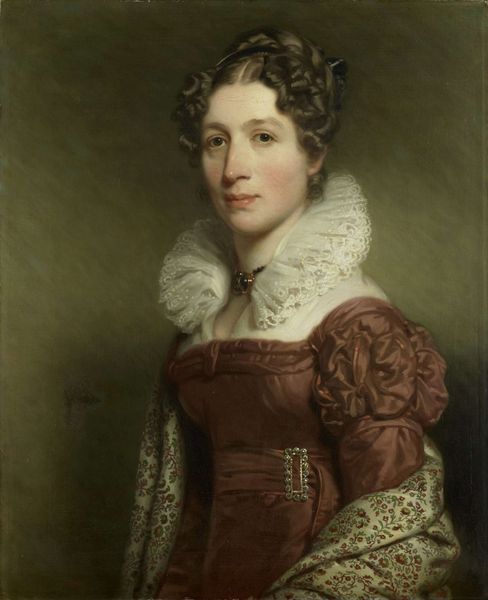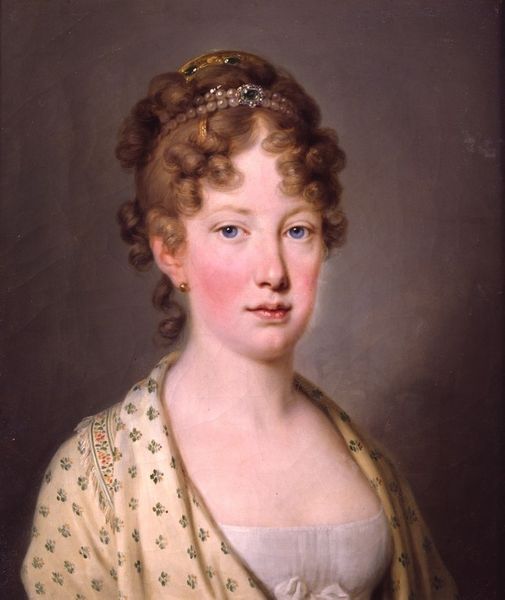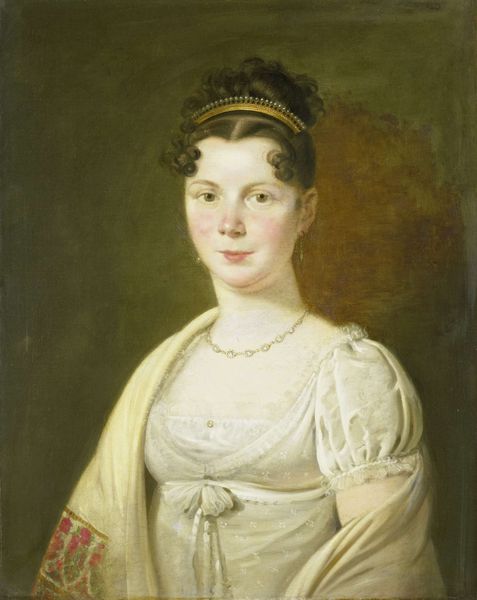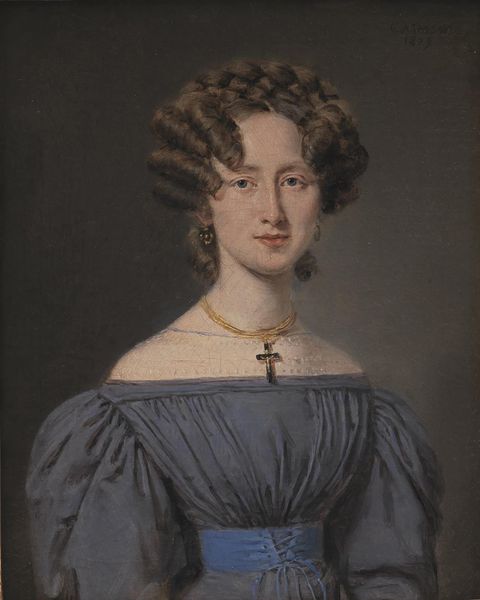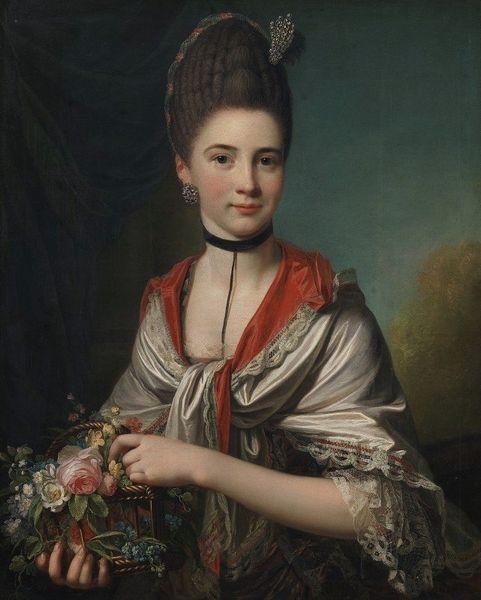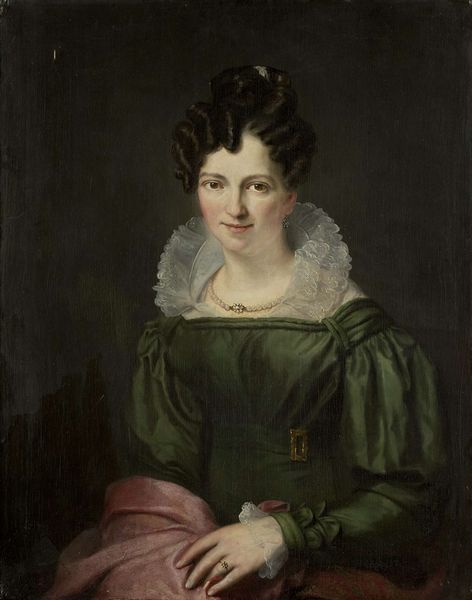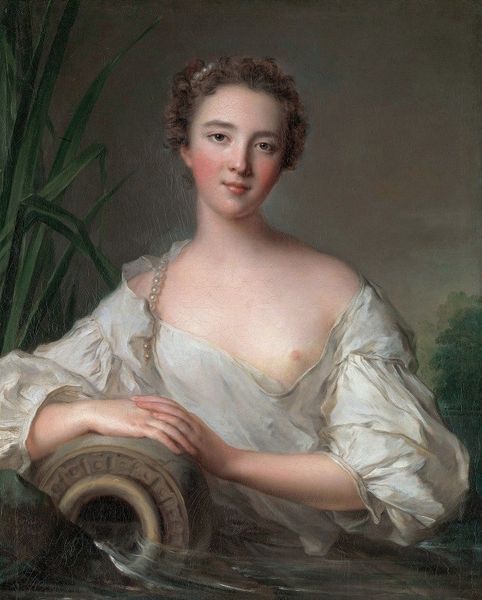
Portrait of Emilie Henriette Massmann, Betrothed of Frederik Wilhelm Caspar von Benzon 1820
0:00
0:00
painting, oil-paint
#
portrait
#
facial expression reference
#
figurative
#
character portrait
#
painting
#
oil-paint
#
figuration
#
portrait reference
#
portrait head and shoulder
#
romanticism
#
facial portrait
#
portrait art
#
portrait character photography
#
fine art portrait
#
celebrity portrait
#
digital portrait
Copyright: Public Domain: Artvee
Editor: This is Christoffer Wilhelm Eckersberg's "Portrait of Emilie Henriette Massmann, Betrothed of Frederik Wilhelm Caspar von Benzon," created around 1820 with oil paints. I notice a careful rendering of fabric textures and the sitter's serene expression. What stands out to you when you consider this piece? Curator: The painting is seemingly a simple portrait, but I look closely at the labor involved in producing not just the art, but the subject’s appearance itself. Consider the dress: the lace, the fabric. Each thread represents labor, skilled craftsmanship often hidden from our view, and its consumption represents access. Editor: So, the sitter's attire offers a perspective beyond the purely aesthetic. Do you mean that clothes indicate the position of the model in society? Curator: Precisely. The portrait then becomes a document of material culture. The subject's expression may be serene, but it's the dress that speaks volumes about her socio-economic positioning and expectations. And furthermore, look at the subtle hand placement. This reveals so much about class and expectations in a very gendered way. Editor: That makes me think differently about it now. What was initially a conventional portrait seems charged with details about society and labor. Curator: It's a good example of how focusing on materiality unveils social stories within even the most conventional artworks. The very act of commissioning a portrait in oil says so much, doesn't it? Editor: Definitely. Thinking about the labor behind both the portrait and the sitter's appearance gives a whole new layer of depth. Thanks for your insight.
Comments
No comments
Be the first to comment and join the conversation on the ultimate creative platform.
